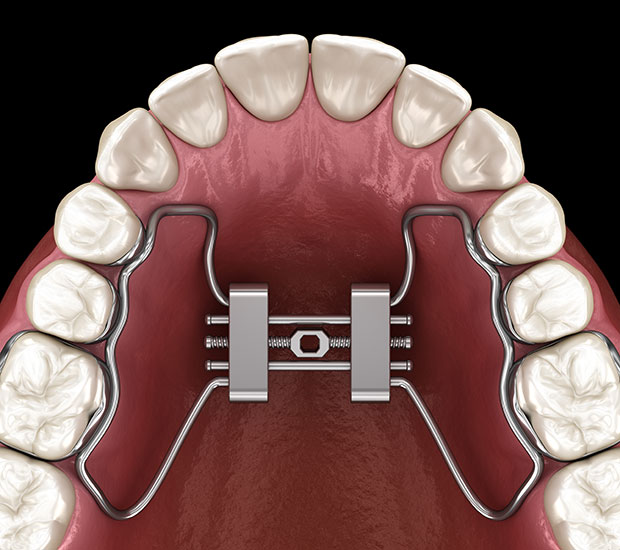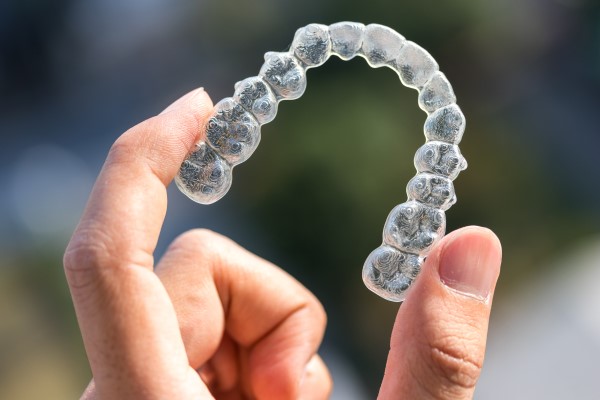Palatal ExpansionOak Brook, IL
Sometimes, children develop a narrow upper jaw. Unfortunately, narrowed jaws can lead to dental problems down the road. Children may develop crowded, crooked, or impacted teeth. They might experience bite problems or tooth decay too. A palate expander may help treat or prevent these issues. Palatal expansion uses a dental appliance to widen the upper jaw gently.
Palatal expansion is available at Panacea Orthodontics in Oak Brook and the surrounding area. Our team can adjust the size and shape of your child's jaw. We offer a range of orthodontic services, including braces and permanent appliances. Call us at (630) 828-5080 to learn more.
Palate Expansion and Oral Health
A child's upper jaw develops as two separate halves. During puberty, these halves fuse — making it important to visit an orthodontist during childhood. Younger patients can receive noninvasive treatments for their jaw problems. But if parents wait too long, surgery may be the only option.
During an orthodontic assessment, the team measures the child's jaws. Sometimes, the orthodontist may decide that the upper jaw is too narrow. A narrow upper jaw can lead to bite problems and crowding. Without treatment, the child's permanent teeth may become crooked. In some cases, the child may need an extraction.
Palate expanders can help a child avoid dental problems in adulthood. Expanders gently widen the upper jaw, creating more room for adult teeth. A wider jaw may repair some bite problems. It can also broaden a child's smile. Expanders may shorten orthodontic treatment time or eliminate the need for further orthodontics.
“Expanders gently widen the upper jaw, creating more room for adult teeth.”
How Expanders Work
Expanders are custom-made to fit along the roof of the child's mouth. These appliances might be removable, or they might be fixed in place. Fixed appliances are glued to the back teeth, but removable expanders work like a retainer. Children can take their expander out to eat, brush or floss. Afterward, they put their expander back in place.
Each expander is equipped with a center screw. Once the expander is fixed in place, patients receive a key. Each day, patients turn the screw to widen the expander. The expander pushes against the jawbones and widens the child's upper jaw. As the child reaches puberty, the bone fuses and solidifies into the correct shape.
“The expander pushes against the jawbones and widens the child’s upper jaw.”
Receiving a Palate Expander
If a child needs an expander, the team begins by taking an impression. They discuss what type of expander the child will need. The orthodontist may also discuss other treatments, like braces.
Often, the team uses an expander to prepare the patient for braces. An expander may shorten the amount of time the child spends in braces. But if the child has only mild bite problems or crowding, an expander may resolve the issue. Braces might not be necessary for all patients. The orthodontist can explain whether the child will need further care.
After taking impressions of the child's mouth, a dental lab creates the expander. The team fits the appliance and explains how to make adjustments at home. In most cases, the patient will need to adjust their expander several times a week. Young children may need help with this process. Parents can oversee the process of daily expander adjustments.
“Often, the team uses an expander to prepare the patient for braces.”
Check out what others are saying about our dental services on Yelp: Palatal Expansion in Oak Brook, IL
Types of Expanders
Removable palate expanders are a popular option. Many families prepare to take the appliance out for eating and cleaning. But removable expanders may not be the right choice for some patients. Removable appliances work well for patients who need small adjustments. If a child's jaw needs significant changes, a fixed appliance may be better.
Several types of fixed appliances are available. Each appliance works in a similar way. First, the expander is attached to the back molars. Parents or patients make regular adjustments with a key. The orthodontist performs regular checkups to make sure treatment is progressing as planned.
“If your child’s jaw needs significant changes, a fixed appliance may be better.”
Questions Answered on This Page
Q. How do palate expanders improve my child's oral health?
Q. How do palate expanders work?
Q. What happens during palate expander treatment?
Q. What types of palate expanders are available?
Q. How do I keep the palate expander clean?
People Also Ask
Q. What are the causes of bite issues and why is it important to fix them?
Cleaning Regimen for Expanders
After your child receives their expander, the team explains how to keep the appliance clean. Oral hygiene is essential for patients who have an expander. Plaque can build up around the appliance. Over time, plaque buildup may lead to gum disease or other dental problems. Parents should plan to supervise daily brushing and flossing.
Children with removable expanders can take it out to brush and floss. Children with fixed appliances can brush and floss around the expander. Sometimes, it can be tricky to keep a fixed appliance clean. A mouth wash can help sweep away debris from hard-to-reach areas.
Patients should avoid chewy, sticky, or hard foods. Cut up foods like apples and carrots into small pieces. Avoid sticky foods like taffy or caramel. Sticky foods can damage the appliance or get stuck in small crevices.
“Sticky foods can damage the appliance or get stuck in small crevices.”
Frequently Asked Questions
Q. Will my child need braces after their expander?
A. After palate expansion, your child may need braces or other appliances. Patients who receive an expander may enjoy a shorter treatment time. Expanders can reduce the amount of time a child needs to spend in braces. Our team can explain the next step in treatment.
Q. How can I determine if my child needs an expander?
A. During a checkup, the orthodontist looks for signs of crowding or impacted teeth. They also check the patient's bite and jaw alignment. If the orthodontist spots a problem, they may recommend an expander. Our team can provide more details about your child's prognosis and treatment options.
Q. How long will my child need to wear their expander?
A. Treatment times can vary. Most children wear their expander for up to six months. Occasionally, the orthodontist may recommend keeping the appliance in place for up to a year. Parents and patients are often eager to finish palate expansions. But early removal may cause a relapse. It is important to follow up with the orthodontist's prescribed treatment plan.
Q. What alternate treatments are available?
A. Palate expansion is a good option for many young patients. But other treatments may also help widen your child's jaw. Some children might be eligible for braces, retainers, or headgear. If your child's jawbone has already fused, a palate expander will not work well. They might need braces, clear aligners, or jaw surgery. The team can help you review your options.
Q. At what age will my child receive their expander?
A. Palate expansion treatment provides optimal results when used at a young age. Around age 14-16, the upper jaw fuses. Palate expanders do not work well on older patients. Most children receive their expander around age 7-8. Our orthodontic team can let you know when your child is ready for treatment.
Start Feeling Better – Visit Us Today
By visiting us as soon as possible, our team can help get you the professional treatment you need. Instead of waiting around and allowing the symptoms to get worse, we can provide you with treatment options.
Definition of Dental Terminology
Call Us Today
Palate expansion help ensures that your child's jaw develops into the proper shape. These appliances can reduce crowding and shift teeth into the correct position. Additionally, an expander may also fix bite problems and speech difficulties. Our orthodontic team can help you choose an expander that meets your child's needs.
If you are ready to discuss palatal expansion for your child, let Panacea Orthodontics in Oak Brook help. Call us at 630-828-5080 to learn more about our services.
Helpful Related Links
- American Dental Association (ADA). Glossary of Dental Terms. 2021
About our business, license, and website security
- Panacea Orthodontics was established in 2019.
- We accept the following payment methods: American Express, Cash, Check, Discover, MasterCard, and Visa
- We serve patients from the following counties: DuPage County and Cook County
- We serve patients from the following cities: Oak Brook, Wheaton, Lombard, Elmhurst, Downers Grove, Berwyn, West Chester, Villa Park, Clarendon Hills, Hinsdale and Oak Brook Terrace
- National Provider Identifier Database (1316375926). View NPI Registry Information
- Norton Safe Web. View Details
- Trend Micro Site Safety Center. View Details
Back to top of Palatal Expansion







